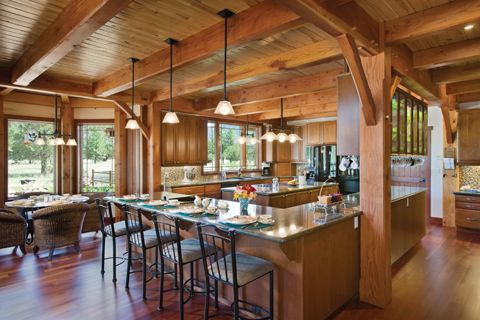
Beauty and Function
I recently had a major operation that resulted in several months of recovery in my home. Although I’m in my 50s, after I had surgery I felt like I was 100. I couldn’t walk beyond a few steps, go up or down stairs, or see very well. I slowly recovered and now I’m doing well. During my recovery months I had a glimpse into what life might be like when I’m much older. The experience changed me in many ways, including how I’m going to design my log & timber home. I want to live in my ho
